Xplore receives USAF contract to develop a commercial navigation and timing service for cislunar space
Wednesday, 25 August 2021 06:46 Xplore Inc., an innovative commercial space company providing Space as a Service has announced a follow on contract with the U.S. Air Force, (USAF) to continue developing their positioning, navigation and timing (PNT) solution as a commercial service for cislunar space.
Xplore's current Phase II effort culminates in a hardware in the loop testbed that will demonstrate the required performa
Xplore Inc., an innovative commercial space company providing Space as a Service has announced a follow on contract with the U.S. Air Force, (USAF) to continue developing their positioning, navigation and timing (PNT) solution as a commercial service for cislunar space.
Xplore's current Phase II effort culminates in a hardware in the loop testbed that will demonstrate the required performa NASA Mission to Asteroid Psyche one year out from launch
Wednesday, 25 August 2021 06:46 With NASA's Psyche mission now less than a year from launch, anticipation is building. By next spring, the fully assembled spacecraft will ship from the agency's Jet Propulsion Laboratory in Southern California to NASA's Kennedy Space Center in Florida for a launch period that opens Aug. 1, 2022.
In early 2026, the Psyche spacecraft will arrive at its target, an asteroid of the same name i
With NASA's Psyche mission now less than a year from launch, anticipation is building. By next spring, the fully assembled spacecraft will ship from the agency's Jet Propulsion Laboratory in Southern California to NASA's Kennedy Space Center in Florida for a launch period that opens Aug. 1, 2022.
In early 2026, the Psyche spacecraft will arrive at its target, an asteroid of the same name i Intuitive Machines selects MDA lunar landing sensors to support moon mission
Wednesday, 25 August 2021 06:46 MDA Ltd has signed an agreement with Intuitive Machines, LLC to provide Lunar landing sensors to support its upcoming IM-1 and IM-2 missions. As a result, MDA landing sensors will support the first soft landing US mission to the Moon since 1972, scheduled for early 2022. MDA landing sensors will also support the first ever mining mission to the South pole of the Moon in late 2022.
Intuitiv
MDA Ltd has signed an agreement with Intuitive Machines, LLC to provide Lunar landing sensors to support its upcoming IM-1 and IM-2 missions. As a result, MDA landing sensors will support the first soft landing US mission to the Moon since 1972, scheduled for early 2022. MDA landing sensors will also support the first ever mining mission to the South pole of the Moon in late 2022.
Intuitiv Indian space agency seeks proposal to utilise data from Chandrayaan-2 lunar orbiter
Wednesday, 25 August 2021 06:46 The researcher with the winning proposal will have three years to complete the project with financial support. The invitation, described as an 'Announcement of Opportunity', is open to all researchers from recognised academic institutions, universities, colleges, planetariums, and Indian government organisations.
The Indian Space Research Organisation (ISRO) has called on the nation's scie
The researcher with the winning proposal will have three years to complete the project with financial support. The invitation, described as an 'Announcement of Opportunity', is open to all researchers from recognised academic institutions, universities, colleges, planetariums, and Indian government organisations.
The Indian Space Research Organisation (ISRO) has called on the nation's scie Pentagon preparing to unveil and demonstrate highly classified space weapon
Wednesday, 25 August 2021 06:46 A new arms race has boosted the dispute over space weapons, with talks periodically raised about a need to extend control over weapons in orbit. Despite numerous calls to demilitarize space, leading countries continue to accuse each other of developing potentially offensive technology.
The US department of Defense is, in the near future, expected to announce and demonstrate secret space we
A new arms race has boosted the dispute over space weapons, with talks periodically raised about a need to extend control over weapons in orbit. Despite numerous calls to demilitarize space, leading countries continue to accuse each other of developing potentially offensive technology.
The US department of Defense is, in the near future, expected to announce and demonstrate secret space we U.S. Army conducts live fire test of its first Iron Dome Defense System Battery
Wednesday, 25 August 2021 06:46 The U.S. Army has successfully executed live-fire test of its first Iron Dome Defense System (IDDS-A) Battery, the branch announced Monday.
The execution of the live-fire test of the first of two IDDS-A batteries, which the U.S. Army acquired from Israel, at the White Sands Missile Range in New Mexico was "a critical step" forward, the U.S. Army said in a statement.
Soldiers from
The U.S. Army has successfully executed live-fire test of its first Iron Dome Defense System (IDDS-A) Battery, the branch announced Monday.
The execution of the live-fire test of the first of two IDDS-A batteries, which the U.S. Army acquired from Israel, at the White Sands Missile Range in New Mexico was "a critical step" forward, the U.S. Army said in a statement.
Soldiers from After meeting with ULA and Blue Origin, Air Force secretary cautiously optimistic about Vulcan
Wednesday, 25 August 2021 00:52
Air Force Secretary Frank Kendall on Aug. 24 met with the chiefs executives of United Launch Alliance and Blue Origin and was briefed on the Vulcan Centaur.
Accelerated digital transformations on Earth are a boost for deep space missions
Tuesday, 24 August 2021 21:00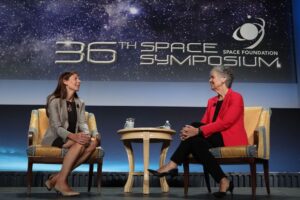
Efforts to digitize spacecraft manufacturing processes to support remote workers during the pandemic are also creating operational advantages for deep space missions, according to a Lockheed Martin executive.
After negotiations, Space Development Agency was able to get reduced pricing for national security launch
Tuesday, 24 August 2021 20:23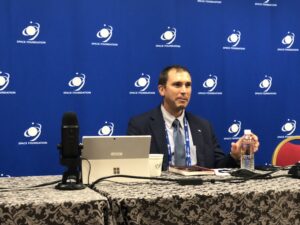
SDA Director Derek Tournear said initially he did not want to use NSSL because it’s significantly more expensive than commercial launches but worked out an agreement with the Space Force to get the cost reduced
Firefly Aerospace’s Alpha rocket ready for first launch
Tuesday, 24 August 2021 19:44
Firefly Aerospace is ready to make its first orbital launch attempt next week as the company balances a transition to operations with plans to develop new rockets and spacecraft.
Orbion wins contract to demonstrate high-thrust propulsion
Tuesday, 24 August 2021 19:10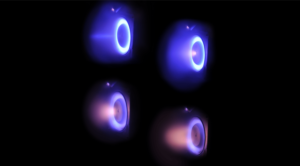
Orbion Space Technology announced a U.S. Air Force contract to develop and demonstrate high-thrust propulsion to help small satellites quickly dodge satellites or space debris.
Kendall reorganizes Space Force acquisition office, wants faster merger with Space Development Agency
Tuesday, 24 August 2021 19:07
Air Force Secretary Frank Kendall announced Aug. 24 he is reorganizing the office that oversees Space Force acquisition programs.
Astronaut: Spacewalk postponed due to pinched nerve in neck (Update)
Tuesday, 24 August 2021 18:41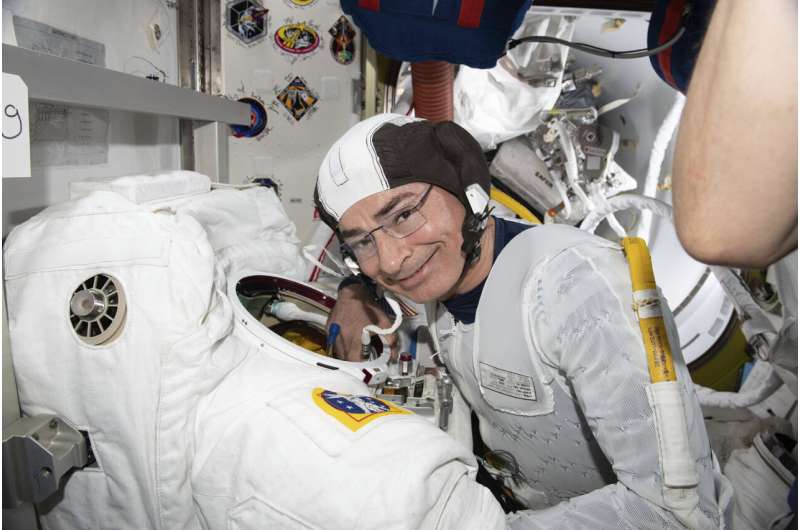
NASA is delaying a spacewalk at the International Space Station this week because of an undisclosed medical issue involving one of its astronauts.
NRO Director highlights cooperation and innovation
Tuesday, 24 August 2021 18:39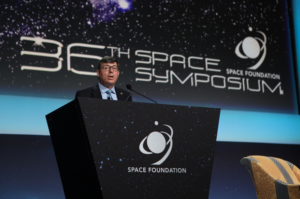
The National Reconnaissance Office is working closely with the U.S. Space Force and U.S. Space Command after signing a document that clearly defines each organization's roles and responsibilities, NRO Director Christopher Scolese said Aug. 24 at the 36th Space Symposium.
Moran: two shots to increase NASA funding this year
Tuesday, 24 August 2021 18:31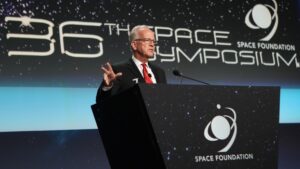
A key senator said he will work to fund NASA priorities like its Artemis lunar exploration program through both the conventional appropriations process as well as a multi trillion-dollar budget reconciliation package.

